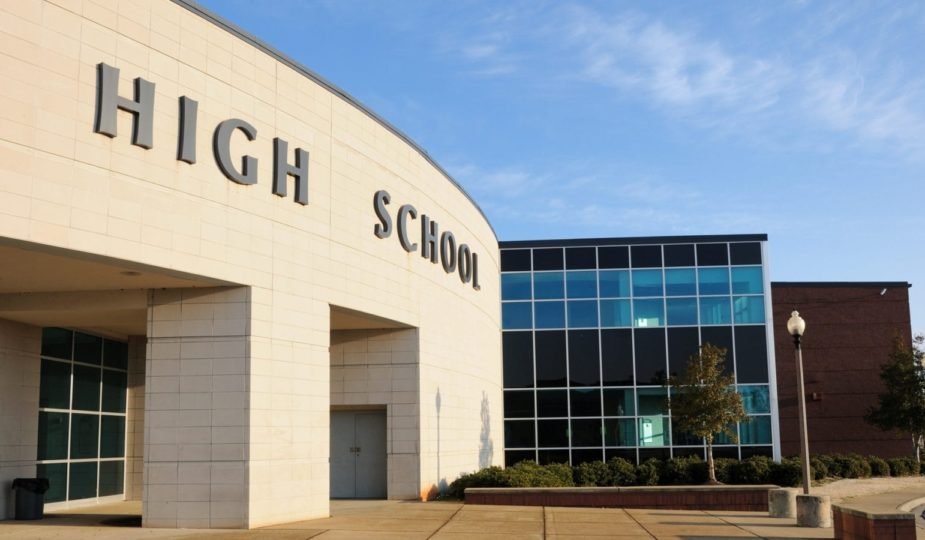
Best high schools in USA
School education lasts 12 years and takes place in different schools. Elementary school lasts for five years. Then children go to Middle school, where they study for three years. High school students study from grades 9 to 12 in high school. The division is not only administrative, but also geographic. The ranking of a school depends on the district where it is located.
From 14 to 18 years old, students attend high schools in USA, where they prepare for college or university. In high school, students choose almost all subjects independently, following their interests and plans.
High School Diploma is a basic school course, after which children receive a diploma and can enter a university. International Baccalaureate is an international program that gives you the opportunity to enter a university in any English-speaking country. The Advanced Placement Program is an additional school course that is designed for grade 13. All subjects are taught at the university level, and often completing this class provides many advantages for admission, including the opportunity to immediately enter the second year of the university.
Each grade in high school has its own name: grade 9 – freshman, grade 10 – sophomore, grade 11 – junior, grade 12 – senior.
The first day of school can start on different days, depending on the state or even each individual city.
Lessons last 45-50 minutes, break – five minutes. Lunch or lunch is on the schedule, that is, it takes time as a whole lesson. Classes begin at about eight in the morning and last until three hours, during which time usually 6-7 lessons take place. Saturday and Sunday are days off, they do not study. It is customary to spend the weekend with family or friends.
No one walks to school – the school has several buses that pick up children near their homes. Students at best High schools in USA can drive their cars and give each other a ride. A driver’s license can be obtained here from the age of 16 years.
High school has compulsory subjects that everyone learns. These are mainly English, physics, chemistry, biology, history and mathematics. The student is free to choose the rest of the subjects independently. This can be a related subject or what is needed for a future profession. For example, economics, programming, foreign languages, engineering or carpentry class, culinary or teaching, filmmaking, and more. There is also Naval Science – where there is a sea, you can study naval affairs, then when you join the army, you will be given a higher rank. In other states, the focus is on the ground forces.
If students cannot master the program, they are transferred to a class where the level of difficulty is lower. The A’s obtained in these two grades will differ. The higher is the one where the level of difficulty is higher. This is taken into account when placing marks in the certificate and, accordingly, when entering higher educational institutions. Those students who did better and have a high percentage of grades can count on free tuition at state universities.
There are many hobby clubs around the school where you can find activities to your liking, from crocheting to robotics. The volunteer movement is very common, in some schools you need to have a certain number of hours devoted to volunteering. Much attention is paid to sports, football and rugby are very popular, but there are many sections, and you can choose the appropriate type of activity for each child.
Secondary education ends with SAT exams – an analogue of the Russian Unified State Exam. Based on the test results, graduates are enrolled in universities. Large universities pay attention to the extracurricular achievements of the applicant: social, creative, sports.
The American educational system aims to ensure that every child can learn in comfort. Freedom of self-expression and creativity is organically included in the educational process. The system is focused on individual personality traits, and not on the team. Diverse ratings and subject specializations provide an incentive for students to study well. The teacher, although he has certain standards and plans, is not shackled hand and foot, and can be creative both in the methodology and in the entire learning process. It is important to remain flexible in order to make learning comfortable and interesting for children with different abilities and levels of understanding.

One of the most popular high schools in USA – Marian Catholic High School Amerigo Education
Marian Catholic High School is a high school located in a cozy residential area of Chicago near the city center. Just a short drive from the school campus, the vibrant American metropolis is bustling with skyscrapers, museums, street festivals and sports battles.
The campus of the school covers an area of 87 acres, where educational buildings and residential residences are located. Classes are held in 58 equipped classrooms; Wi-Fi is available throughout the campus. At the service of schoolchildren are physical, chemical, biological, computer laboratories, a consulting center and a center for learning resources.
The campus has a developed sports infrastructure – there are 2 large gyms, 8 tennis courts, a gym, a football stadium with artificial turf, baseball and softball fields, and jogging tracks. Classes in music, fine and dramatic arts, handicrafts are held in specially equipped studios and workshops. The school has its own theater with 400 seats, a Leadership Center with 500 seats, and a library with 28,000 volumes.
The school is accredited by the North Central Association of Colleges & Schools. Twice the educational institution was awarded with The Blue Ribbon School of Excellence awards. It is a national program that identifies the institutions with the highest achievement levels and the smallest gap between student groups. Among the former graduates of the Marian Catholic High School are famous scientists, businessmen, professional athletes.
According to the U.S. News & World Report, ranked among the nation’s top schools and is the leader among private and public schools in the southern states in terms of academic performance.









